How to create a brand personality that drives growth (lessons from our journey)
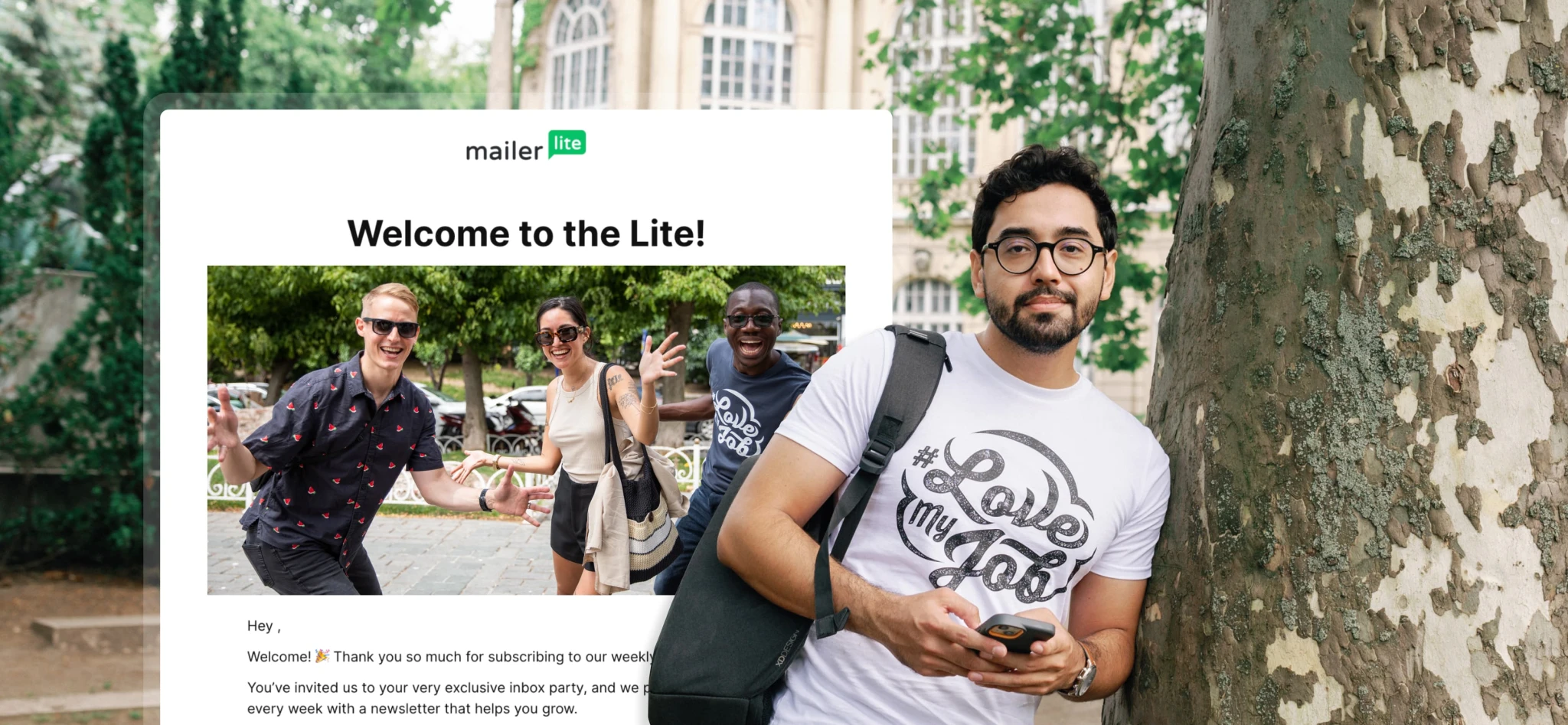 Cesar, customer support
Cesar, customer support
Apple is the most valuable company in the world. Starbucks sells $7 coffees. Oatly is converting cow milk drinkers in droves. HOW!!!?
These brands represent something bigger than the product. They have a brand personality that connects with people on a deeper, emotional level, helping them stand out against similar products.
The good news: You don’t have to be a Fortune 500 company to have a brand that beats the competition and drives growth. Any company can create a strong brand personality by consistently aligning its values, messaging, and visual identity in a way that appeals to its target audience.
This article will help by breaking the process down into 8 steps and highlighting how we built our brand personality at MailerLite.
Before we start: What is brand personality?
Brand personality is the human characteristics, traits and core values that you apply to your communications. These attributes, such as a tone of voice, values, and behaviors, make your brand more relatable, memorable and distinct from other similar brands.
“Products, like people, have personalities, and they can make or break them in the marketplace.”
When creating a brand personality, think about the values and mission that drive your business. Then align these beliefs with your target audience to create a personality that appeals to your buyers.
How brand personality drives growth
An authentic personality that appeals to buyers is especially important in industries where most products and services offer similar benefits and outcomes.
Take the coffee industry. Starbucks might not sell the best coffee in the world, yet it’s by far the most popular coffee chain and sells millions of cups of coffee every day.
Why do people seek out the Starbucks brand when there are so many competing options? Of course, there are factors like location and availability. But much of the reason also comes down to the emotional connection people have with the brand thanks to its strong personality.
Here are some of the ways that personality impacts people’s decision to drink at Starbucks.
People are more aware: The Starbucks brand is instantly recognizable. When customers can easily identify and remember your brand, you're more likely to capture their attention.
People have a prebuilt perception: When people think of Starbucks, they think of good coffee, consistent service, and a welcoming environment. It's easier to go to Starbucks over a competitor if you value any of the above factors.
Brand personality builds trust: Starbucks has consistently built its personality over 50+ years and reinforced it in all its communication. This has built the brand into one that is reliable and dependable.
Personality leads to brand loyalty: One of the reasons Starbucks sells so much coffee is due to repeat customers. Brands with strong personalities are easier for people to connect with and ultimately stay loyal to.
The rest of this article will outline 8 steps to build a brand personality to take advantage of the above benefits. We’ll also show you how we took each step at MailerLite.
8 steps to creating a brand personality that connects
There is no perfect formula for developing a brand personality. Some companies have a strong culture that informs their personality. Others have a charismatic leader who drives the personality from the top down.
When creating a personality, most companies start with their values or beliefs. That’s how we built our brand at MailerLite, and it is the best way to ensure your personality is authentic.
Here are 8 steps you can take to identify your brand personality with examples from our own branding journey.
Step 1: Use your core value as the foundation
People can spot a fake person from a mile away. It’s only a matter of time before you lose all credibility when you try to be something you are not.
The same is true for brands. So when you craft your brand personality, use your company values as the foundation to ensure your personality accurately reflects your business.
How we did this at MailerLite
We started our branding process by taking our core values and putting them in a communications context. The aim was to take each value and then define how this should impact the way we present ourselves.
Below are our 5 values in bold text followed by an articulation of how the value impacts our brand personality.
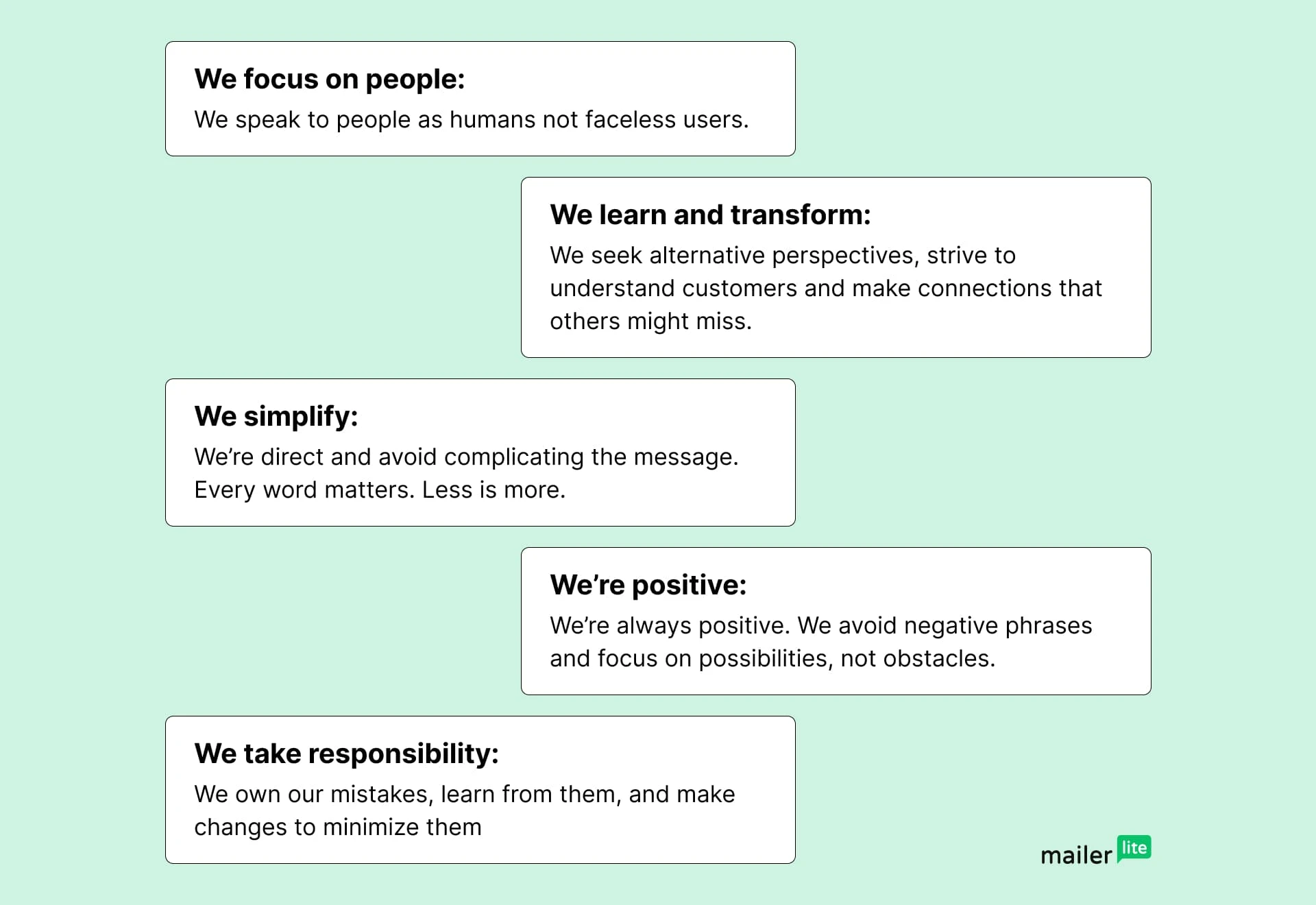
Step 2: Align your personality and audience
Know your audience and make sure your brand personality appeals to them. Start by talking to your target market and interacting on social media to create a picture of what inspires them, how they talk, their challenges and what drives purchasing decisions.
Take your time with this step as aligning personality and audience is the difference between attracting and putting off your target audience.
How we did this at MailerLite
Our target demographics are small businesses and independent creators who are looking for affordable, user-friendly email marketing solutions.
Here’s what we learned about them to inform our branding strategy.
Our customers have an informal, non-corporate way of communicating, which gives us the freedom to be our authentic selves.
Our voice is tailored to address their needs and pain points by providing solutions clearly and concisely.
We connect with them by being personal, empathetic and playful, while always maintaining professionalism.
You can see an example of this communication style in the image below.
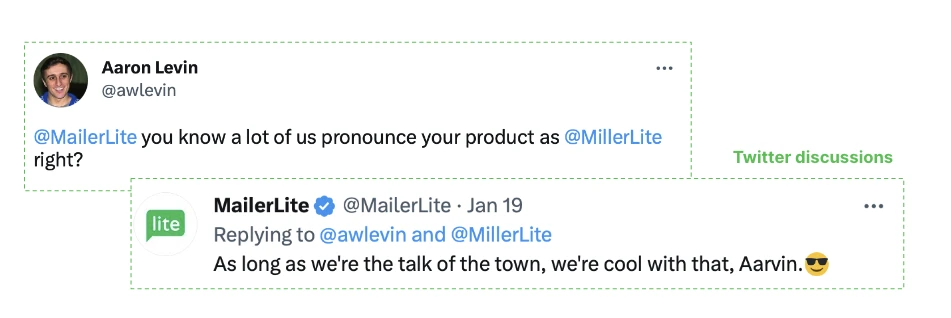
Once we defined this information about our customers, it was much easier for us to create a brand personality that connected with our audience.
Here’s another example of how we align with our customers on a personal level by partnering with them to spread knowledge and support the bigger MailerLite family.
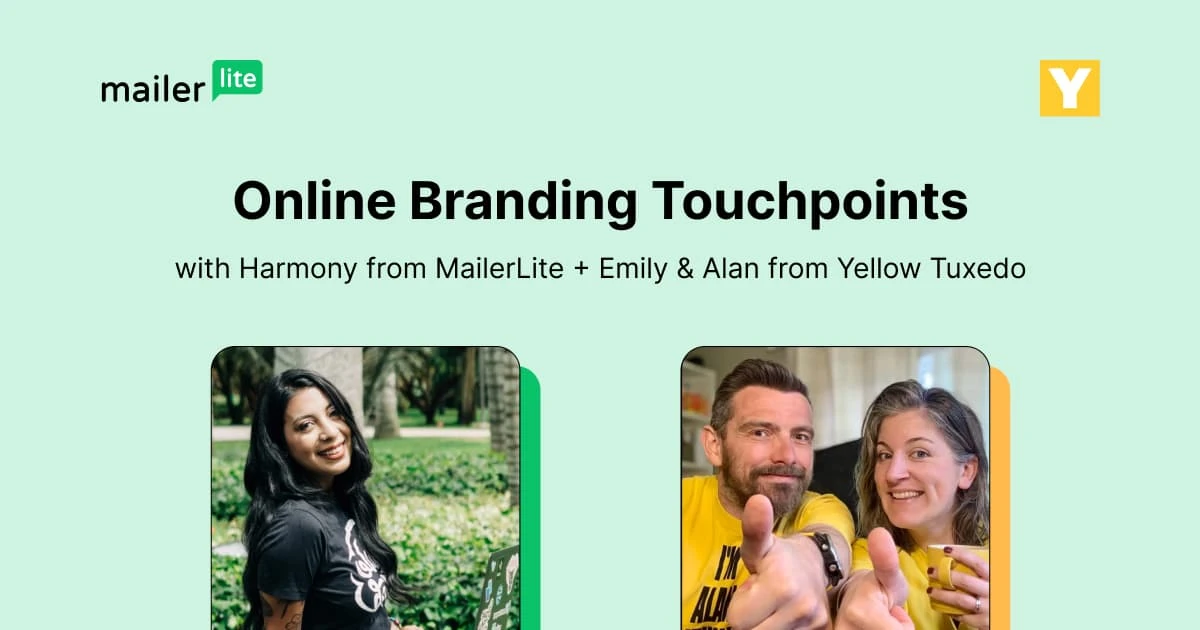
Step 3: Create communication guidelines
Once you’ve defined your audience and personality, create a set of communication guidelines that define how you should communicate. This is an important step as communication is a key outward-facing part of your brand personality.
At this stage, write down the goals of your communications. Later in this article, we’ll focus on creating a tone of voice that reflects these communication goals.
How we did this at MailerLite
With our audience and values defined, we created a set of communication guidelines that would inform how we communicate. The aim of each rule is to reflect our company values in a way that appeals to our audience.
This set of guidelines became the starting point we were able to use to define our personality and tone.
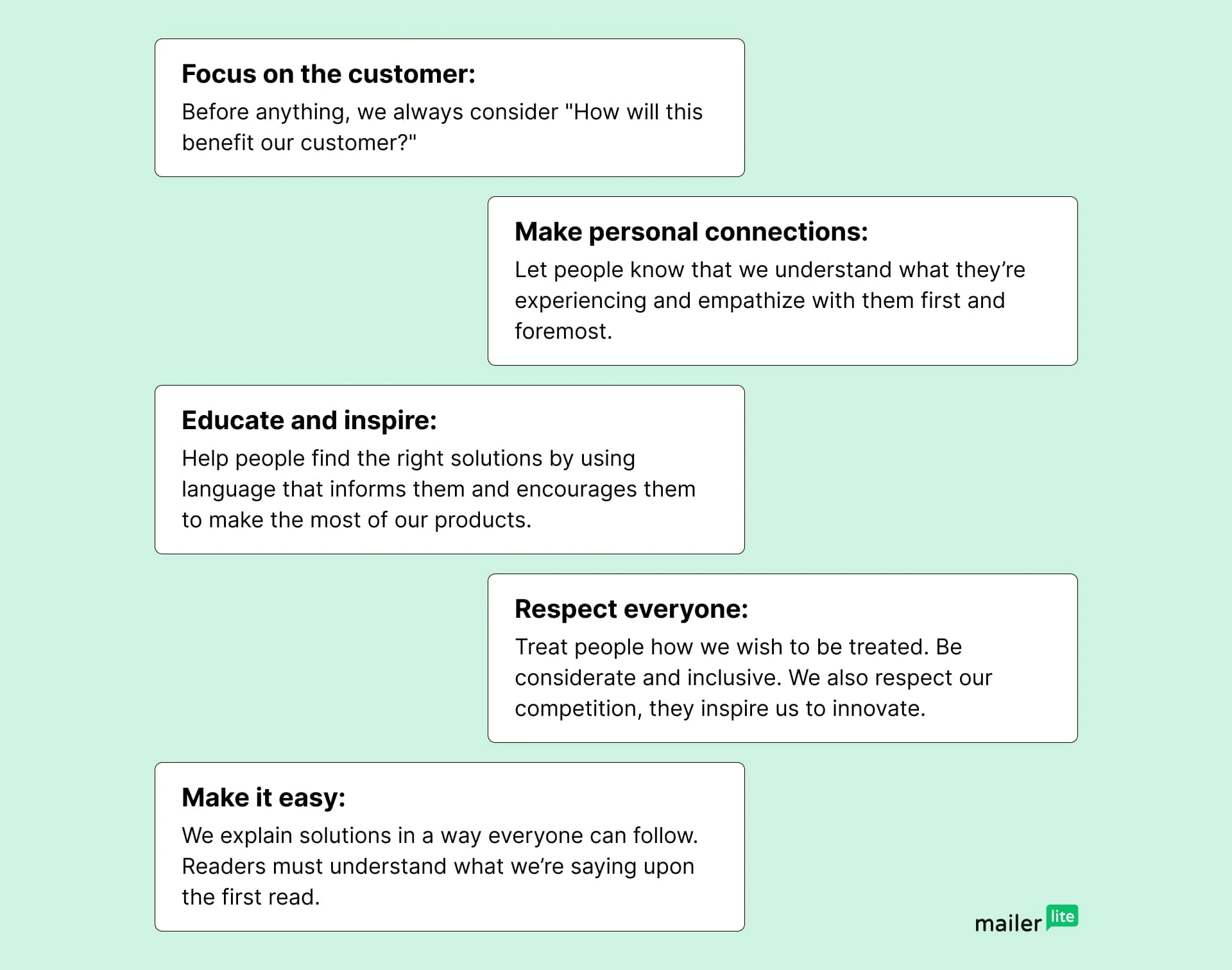
Step 4: Choose a brand archetype
Audiences love storytelling. And all stories have characters that fit different archetypes like the hero (Harry Potter), the sage (Dumbledore), and the everyman (Ron).
Archetypes can also be used when creating a brand personality to help you define and communicate your personality more effectively. Traditionally there are 12 archetypes, but you can take attributes from more than one.
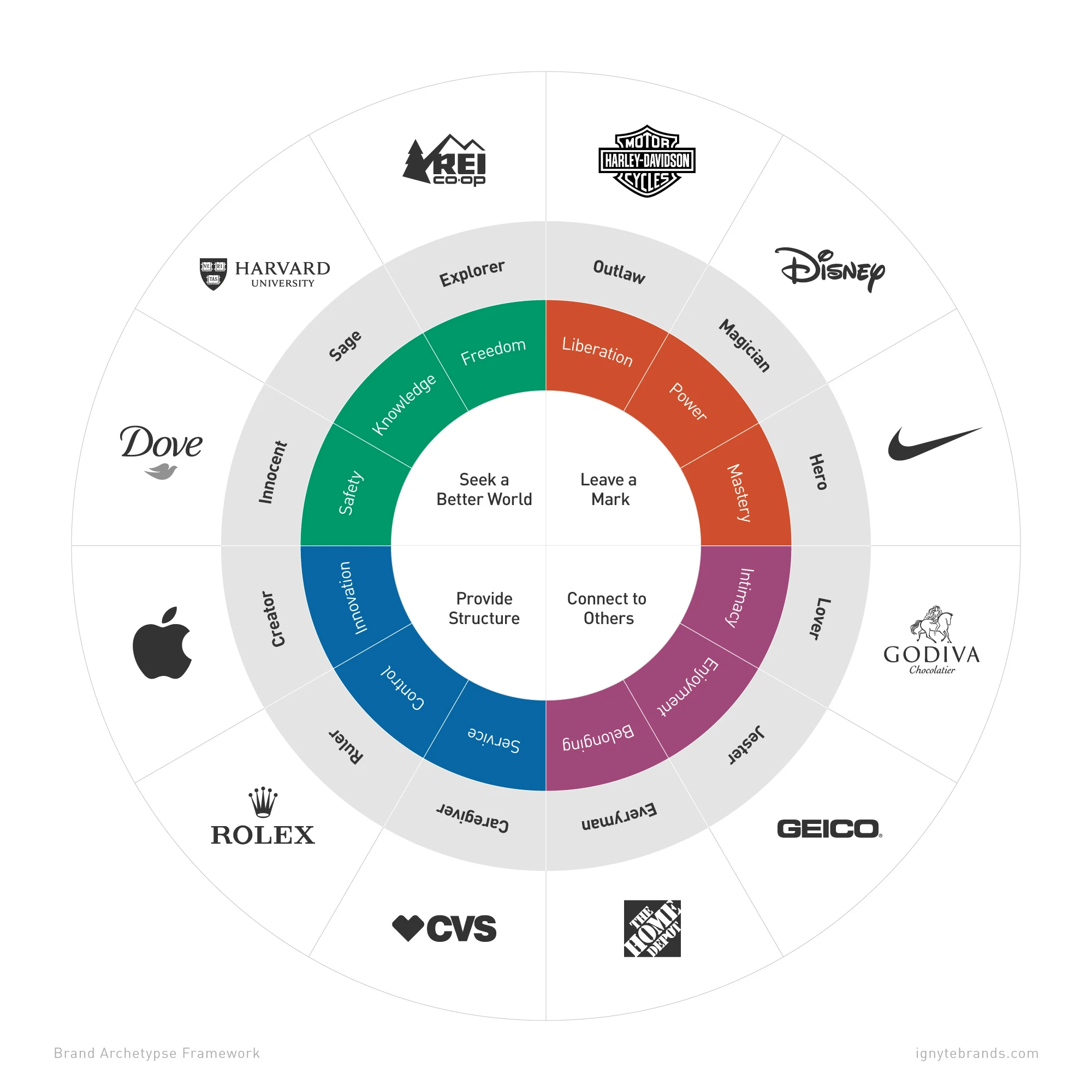
Choose your personality types based on how your brand fits into your audience's story. Once you’ve chosen an archetype, clearly define the traits and characteristics that define this archetype’s personality.
How we did this at MailerLite
At MailerLite, we identified our brand archetype as a mix between Everyman, Caregiver and Sage.
We value community (Everyman), award-winning service to our customers (Caregiver) and delivering expertise (Sage) to help people grow their businesses.
We then mapped out the personality characteristics that fit with our archetype mix. This helps turn the abstract archetype into a clear set of traits that define our brand personality.
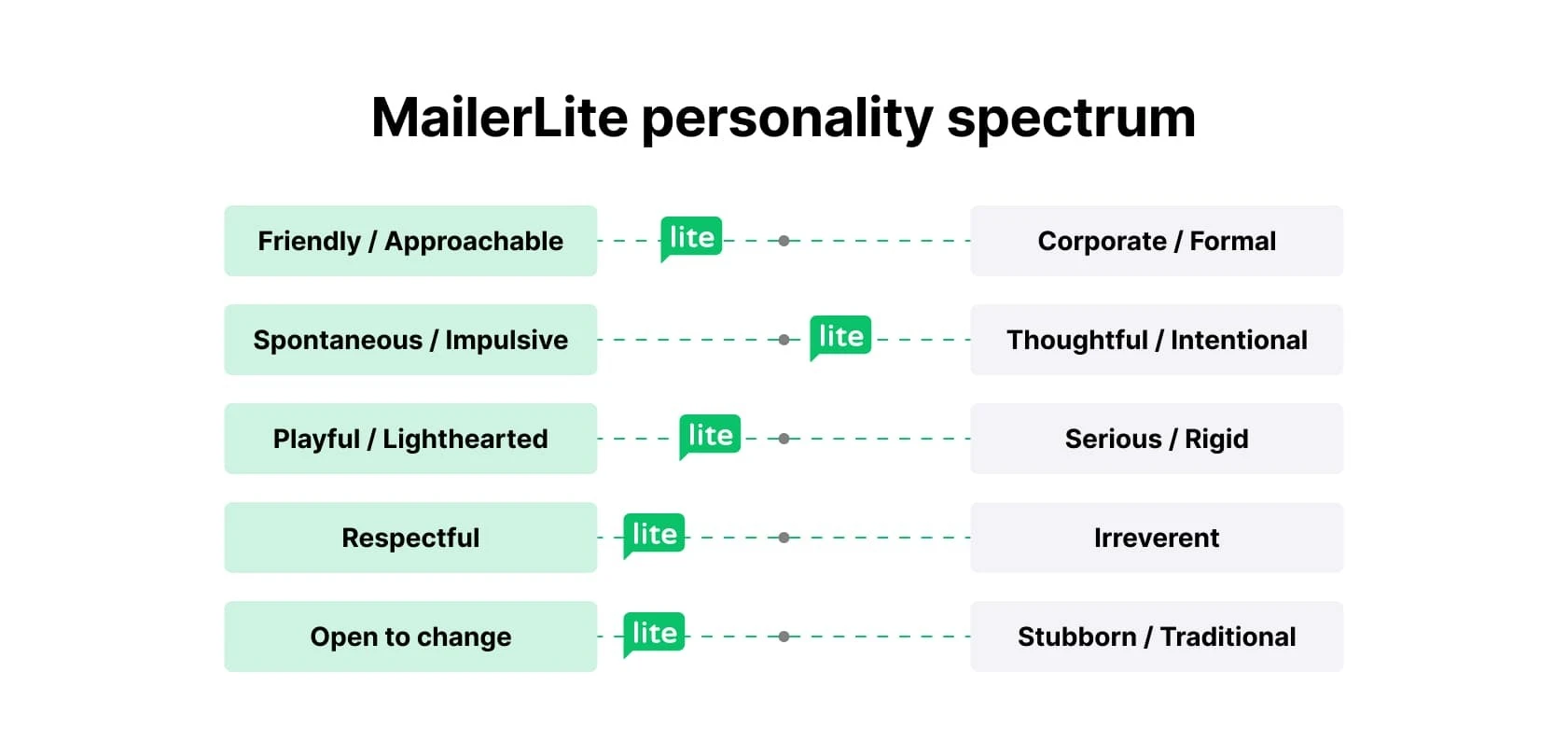
Once we defined the personality, we mapped this into a tone of voice spectrum that everyone in our company can use to clearly see how they should be communicating.
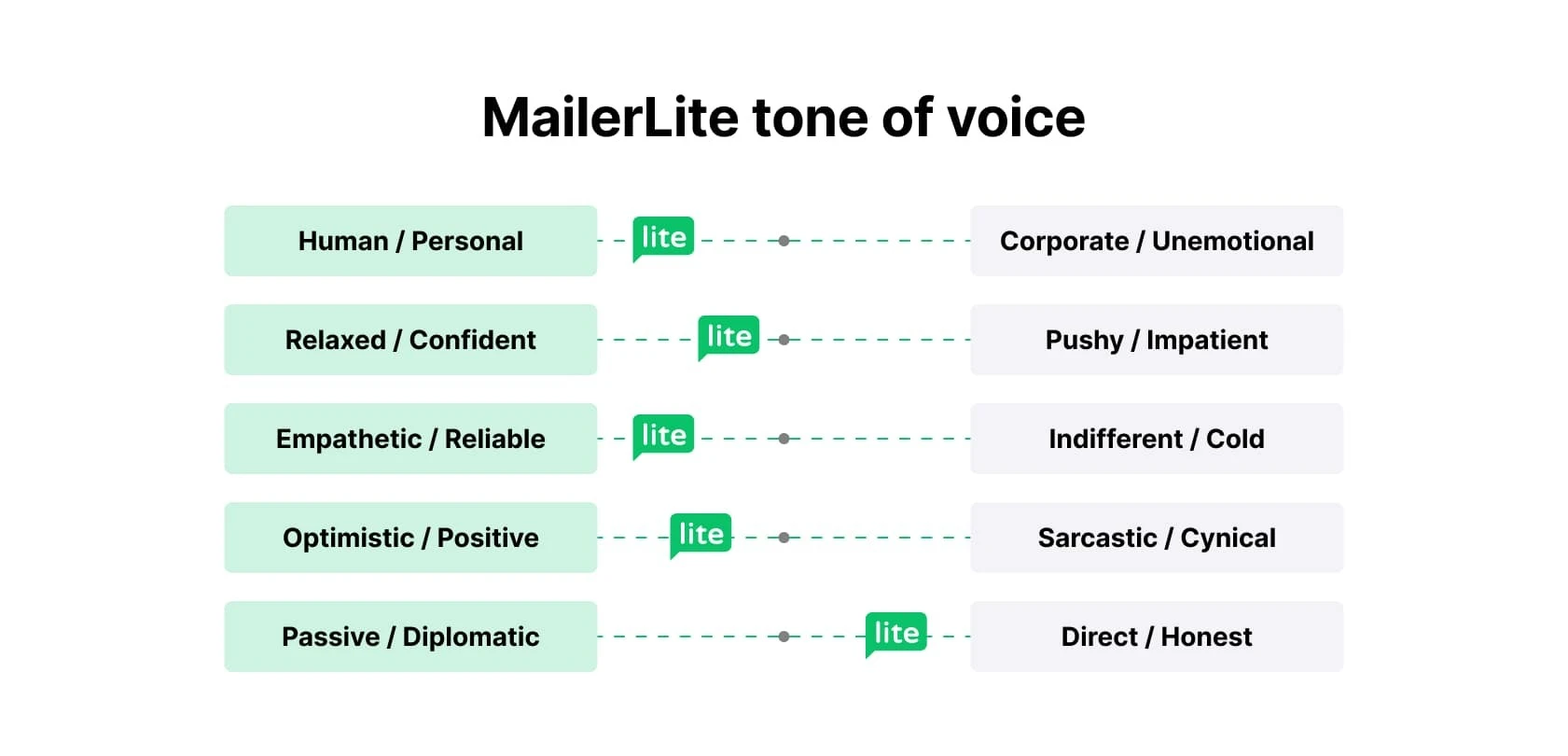
We were also able to use the tone of voice and personality spectrums alongside our communication guidelines to start with the next step: crafting our brand voice.
Here is our brand personality at work. When a web visitor hits a 404 page, we use it as an opportunity to connect with them by being playful and thoughtful.
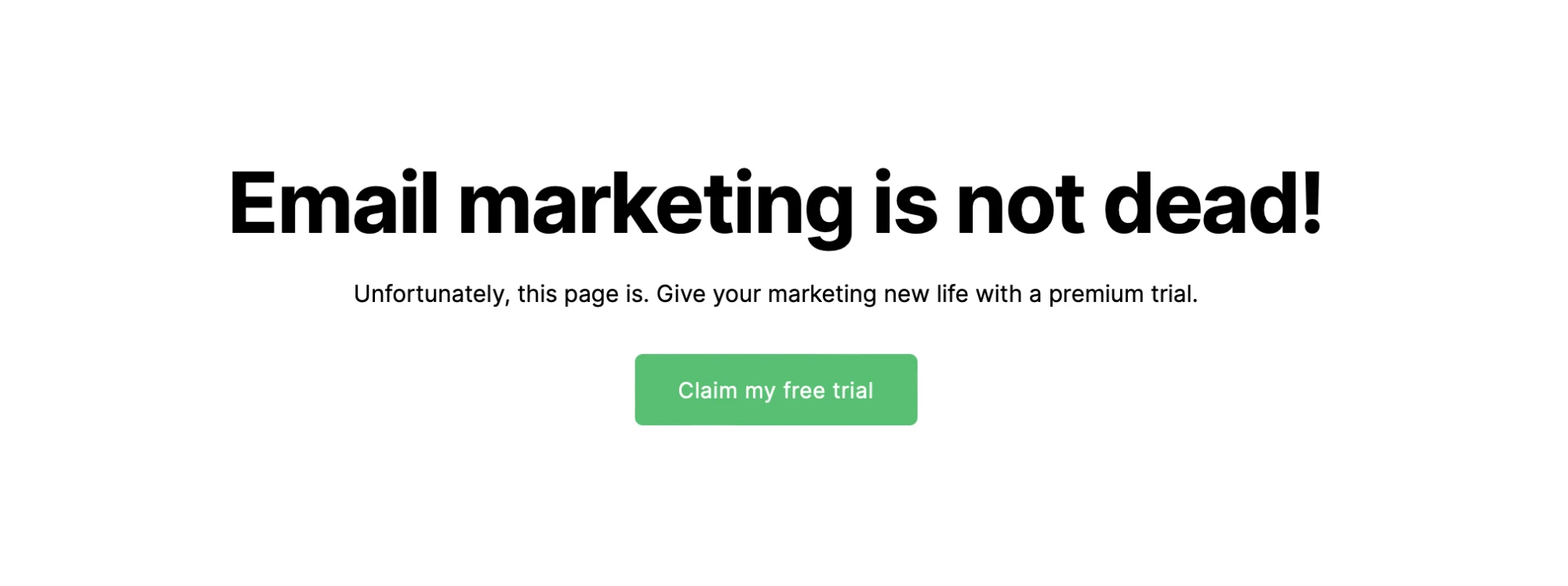
We also show our brand personality by using photos of the team for all marketing purposes. So when you see a blog article or an ad, the people smiling back at you are always MailerLite team members showing you their authentic selves.

Step 5: Craft a unique brand voice
How you speak to your audience is a big part of how you will be perceived. Develop a consistent tone of voice that aligns with your personality and resonates with your audience.
You can then create another spectrum that defines the tone of voice you use so that your team can understand it and put it into action during their communications.
How we did this at MailerLite
Once we defined the information about our values, audience and archetype, we put this to use by creating a brand personality that fits these characteristics.
We settled on two distinct voices: the friendly expert and the playful professional. Here’s what each of these voices means to us.
Friendly expert: We share expert knowledge as a friend rather than an authority figure, in a conversational way that makes people feel comfortable and empowered to reach their goals. This voice is knowledgeable yet approachable and it’s how we want customers to describe us on a day-to-day basis.
Playful professional: We “keep it lite” which means approaching work with a lighthearted perspective, while keeping a professional mindset and always focusing on our client’s success. By balancing the serious stuff with humor or creative touches, we aim to make our communications more engaging and memorable.
We use each of these personalities for specific types of communication that best fit the tone of voice.
For example, we use friendly expert in our blogs, knowledge base, and academy—places where our customers come to learn about our product and email marketing.
Friendly expert example
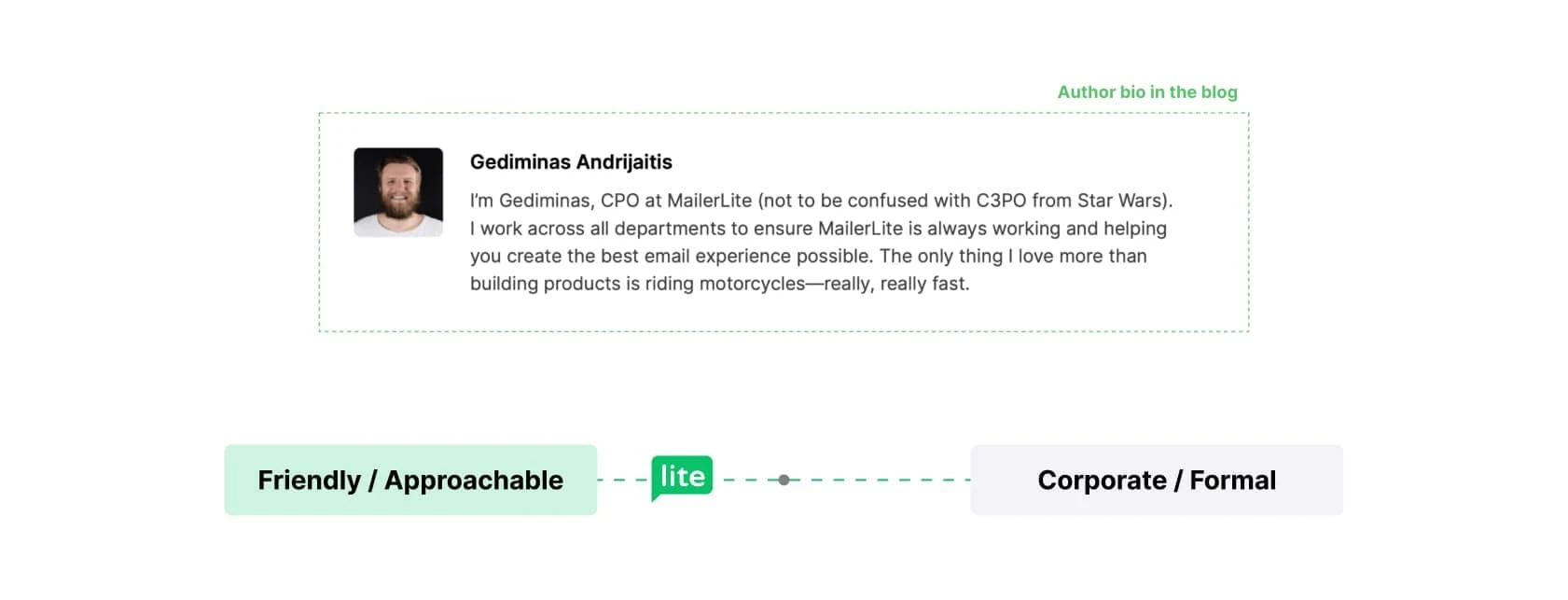
But we use playful professional for our newsletter, social accounts and in blog introductions. These are places where balancing professionalism with a light-hearted tone can result in more memorable interactions.
Playful professional example
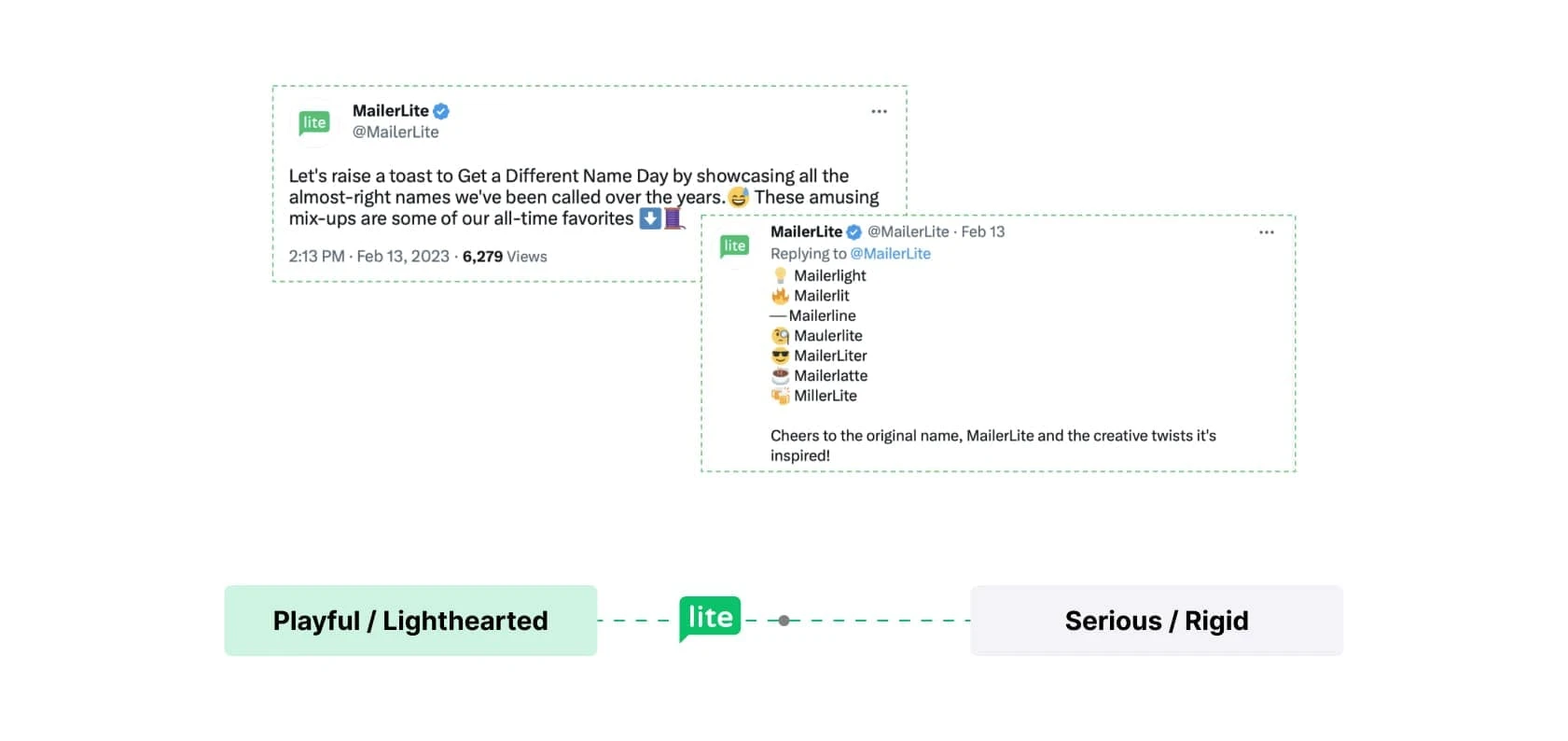
Creating these personalities makes it super easy to understand how our teams should be communicating with customers. Defining when they should be used ensures we always match the correct tone to the relevant situation.
Step 6: Create a visual identity
Your brand personality isn’t just the voice you use. Visual elements such as colors, imagery and typography bring your communications to life. These elements have different connotations so be sure to use the ones that reflect your brand personality.
Colors can mean many things. Blue signifies trust and openness, which is why it’s used by many banks, while red stands for passion and excitement, which is why it works for Coca-Cola and Netflix.
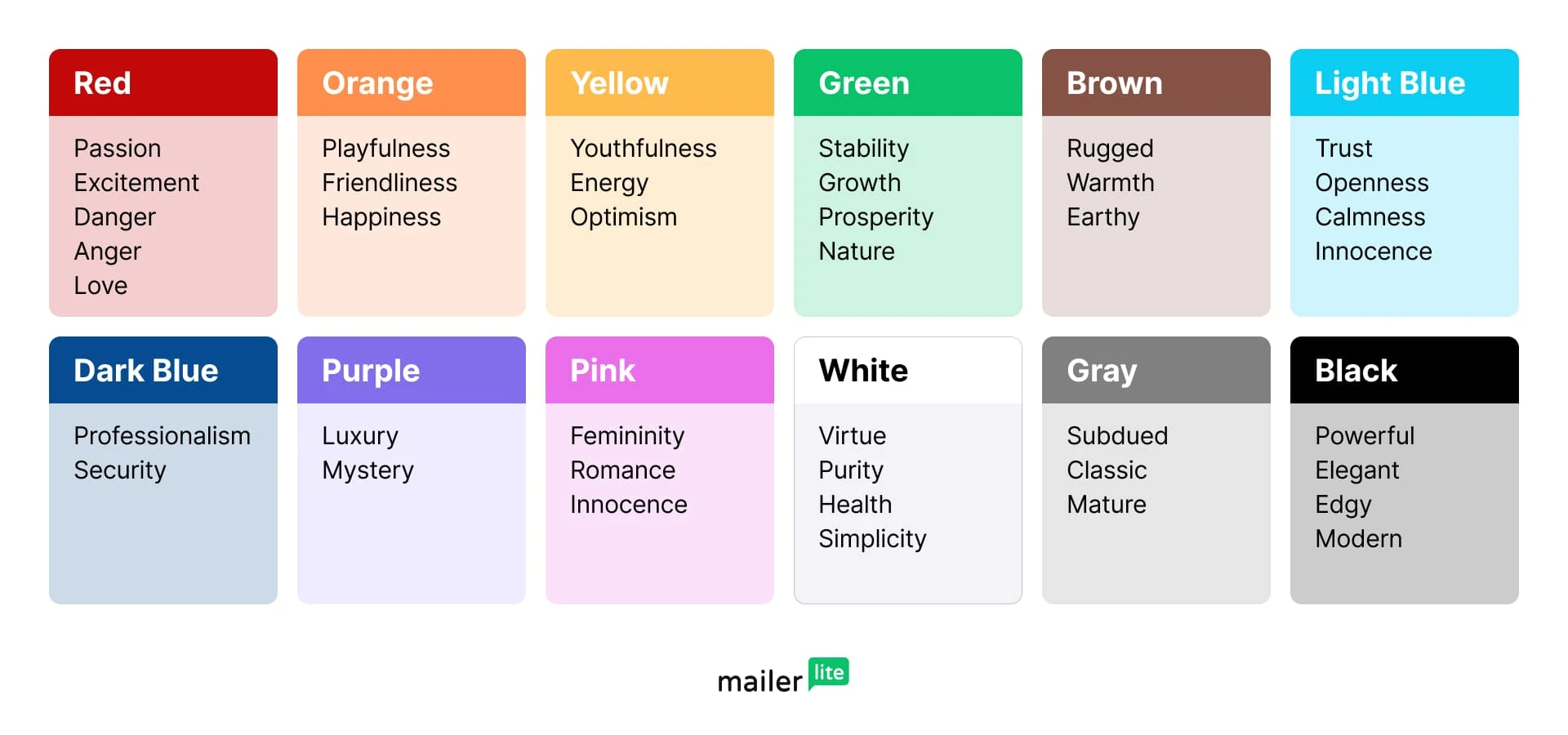
Meanwhile, fonts can symbolize a wide variety of personalities. You can see some examples in the image below.
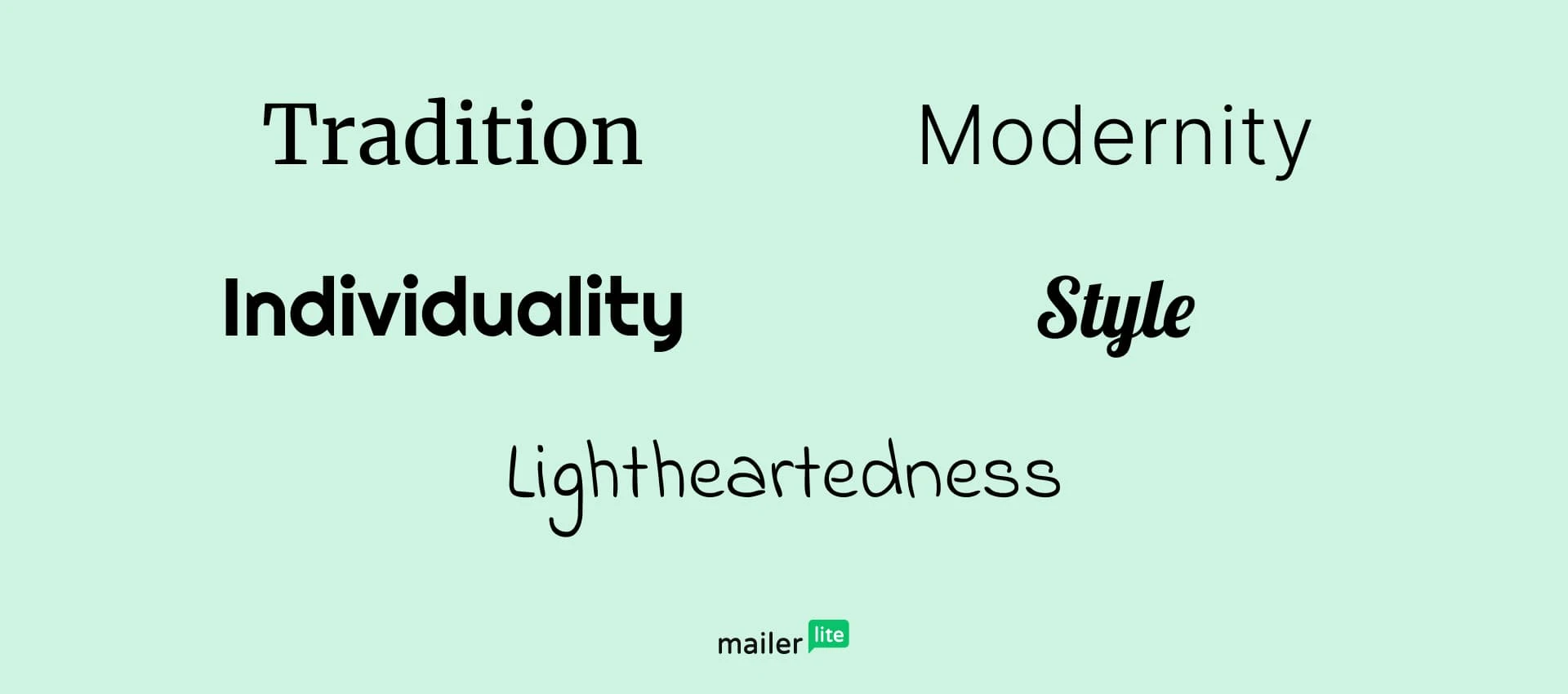
The images and graphics you use are also a big part of your personality, so be sure to choose images that reflect your values and appeal to your target audience.
How we did this at MailerLite
Our visual identity reflects our brand personality well. Here is how each part of our visual identity works to build our brand personality.
Color palette
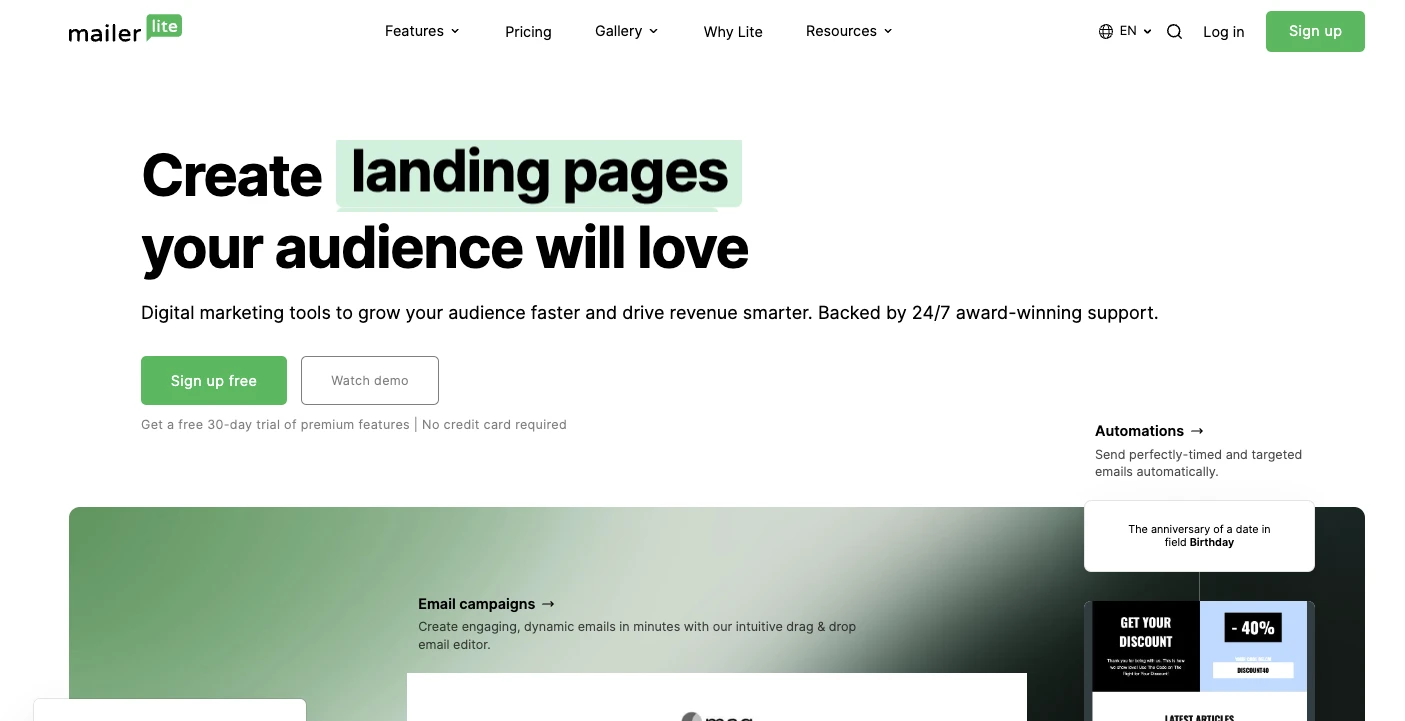
Our color palette balances neutrals with bright highlights. The primary color green is a vibrant tone that is easily recognizable. It also evokes prosperity and growth, so is a color sure to appeal to our audience of small business owners.
Font
We use Inter as our font (including in this article) because it is modern and clear. It was also made for use on computer displays and is always clear on electronic devices. This is essential as our communication aims to be direct and easy to follow.
Imagery
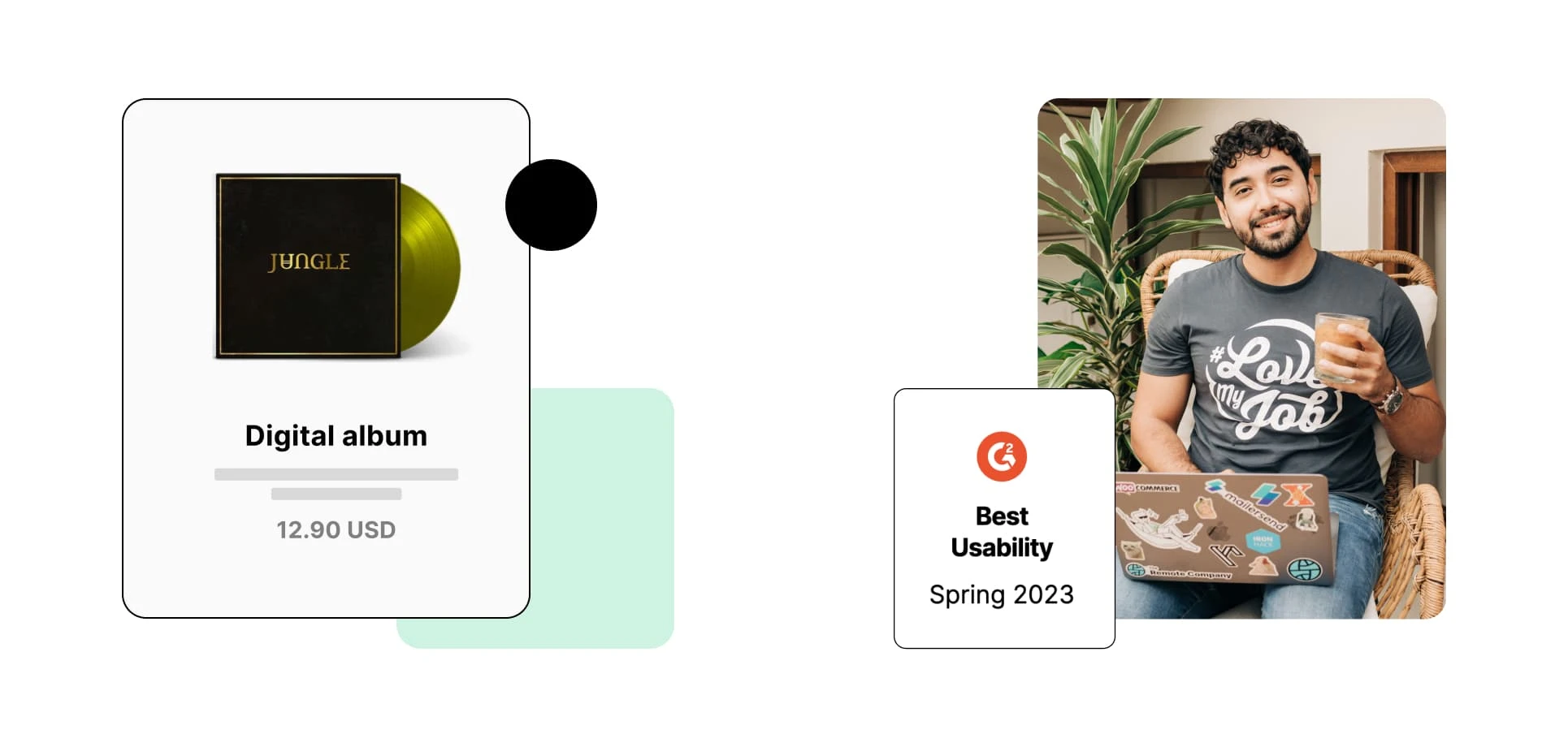
We use images of our people to make our brand messaging feel more personal and community-focused. We also use minimalist graphics that focus on clarity, whitespace and cleanliness. Again, this fits with our personality and goal of prioritizing clarity in our communications.
Step 7: Communicate consistency everywhere
Ensure that your brand personality is consistent across all customer touchpoints. Whether it's your website, social media, packaging, or customer service interactions, the personality should remain cohesive.
This helps reinforce your brand personality in the minds of your customers, making you more memorable while building a sense of trust and reliability.
This doesn’t mean using the exact same branding on every channel. Your communication should be tailored to what works on each platform. For example, YouTube thumbnails should be eye-catching to stand out and generate clicks, even if your brand personality is more understated on other channels.
But by using some consistent elements, whether brand colors, fonts, or tone of voice, customers will be able to recognize you wherever they are.
How we did this at MailerLite
We aim to use our distinctive brand personality in all communication while optimizing it for what works best on each platform.
Everything from our website and app to our social profiles and YouTube channel uses similar brand visuals and conversational style. This ensures we’re instantly recognizable on each platform.
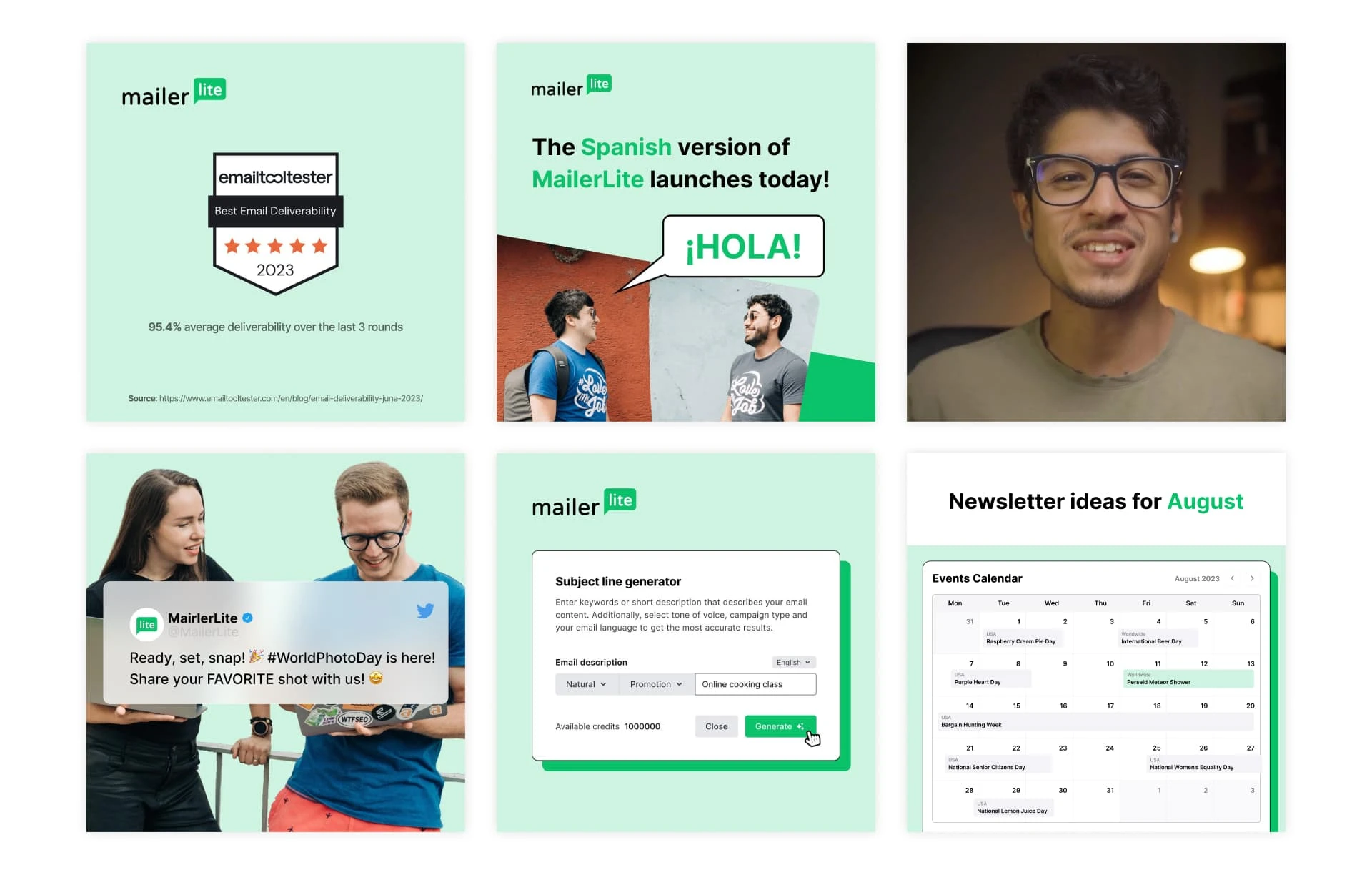
Step 8: Measure and adjust when needed
Regularly measure the effectiveness of your brand personality. While you want to keep your personality consistent, you can make intentional changes if metrics like customer engagement, brand sentiment, and sales suggest that your personality isn’t resonating.
Remember, creating a strong brand personality takes time and dedication. It's an ongoing process that involves understanding your audience, refining your communication, and consistently delivering on your brand promises.
How we did this at MailerLite
We’ve been around for over a decade so our brand voice is quite established. But we’re still experimenting and evolving as our audience expands.
Most recently, we’ve been bringing our email newsletter more in line with our brand personality by including more information about our team to make the content feel more personal, as well as adding more helpful product-related content.
Having trouble getting started? Here are some of the most common personality traits used by brands.
Sincerity:
Traits: Honest, genuine, down-to-earth, wholesome, caring.
Example Brands: Dove, Coca-Cola, TOMS.
Excitement:
Traits: Energetic, enthusiastic, daring, youthful, fun.
Example Brands: Red Bull, Nike, MTV.
Competence:
Traits: Reliable, intelligent, professional, successful, accomplished.
Example Brands: IBM, Microsoft, Mercedes-Benz.
Sophistication:
Traits: Elegant, luxurious, refined, classy, cultured.
Example Brands: Chanel, Rolex, Lexus.
Ruggedness:
Traits: Tough, outdoorsy, adventurous, rugged, authentic.
Example Brands: Jeep, The North Face, Harley-Davidson.
Innovation:
Traits: Creative, forward-thinking, cutting-edge, imaginative, original.
Example Brands: Apple, Tesla, Google.
Friendliness:
Traits: Approachable, warm, cheerful, helpful, kind.
Example Brands: McDonald's, Disney, Amazon.
Rebellion:
Traits: Non-conformist, edgy, unconventional, rebellious, anti-establishment.
Example Brands: Converse, Harley-Davidson, Diesel.
Nostalgia:
Traits: Sentimental, traditional, nostalgic, vintage, classic.
Example Brands: Coca-Cola, Levi's, Cracker Barrel.
Empowerment:
Traits: Empowering, inspiring, motivational, supportive, uplifting.
Example Brands: Nike, Dove, Always.
5 effective brand personality examples
You've seen how we created our brand personality, but plenty of well-known brands have done a great job of crafting a personality that stands out and appeals to their audiences.
Here are some examples as well as a rundown of the factors that make the personalities so appealing.
Nike
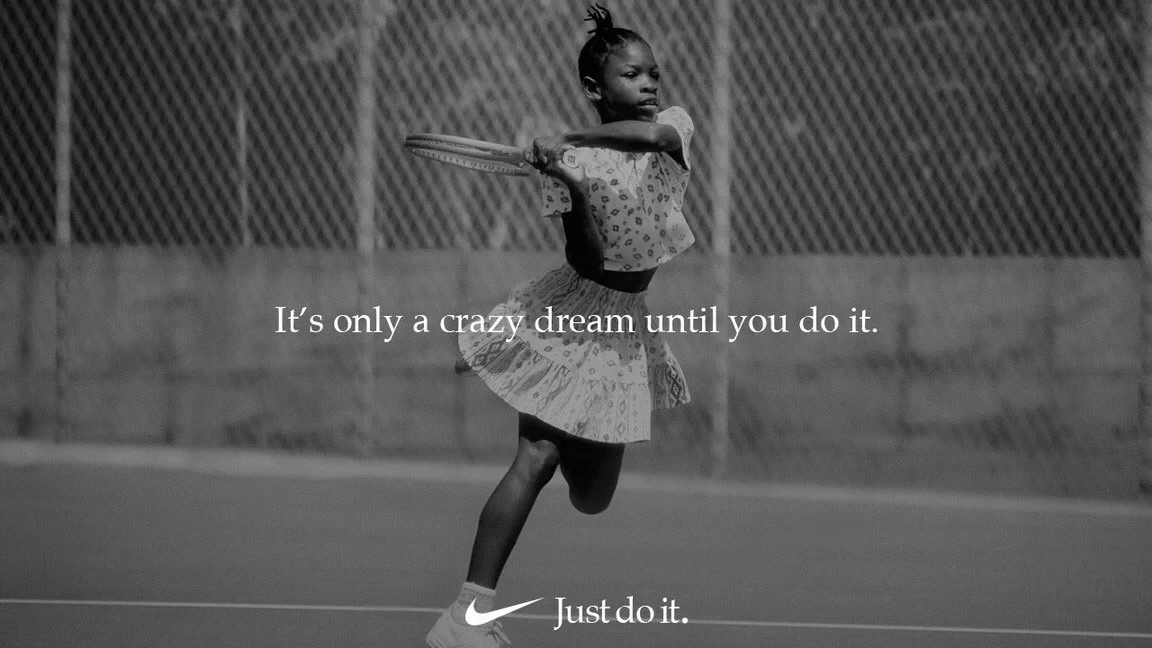
Personality traits: Inspirational, motivating, energetic, empowering.
Why: Nike's brand personality is all about encouraging individuals to pursue their goals and overcome challenges.
Elements: Powerful modern bolded fonts. Black color pallet signifies power, edginess and modernity. Images show athletes achieving greatness.
Voice: Nike’s direct, positive and motivating voice comes through in phrases and taglines like “Just do it” “Find your greatness” and “It’s only a crazy dream until you do it”.
Ben & Jerry's
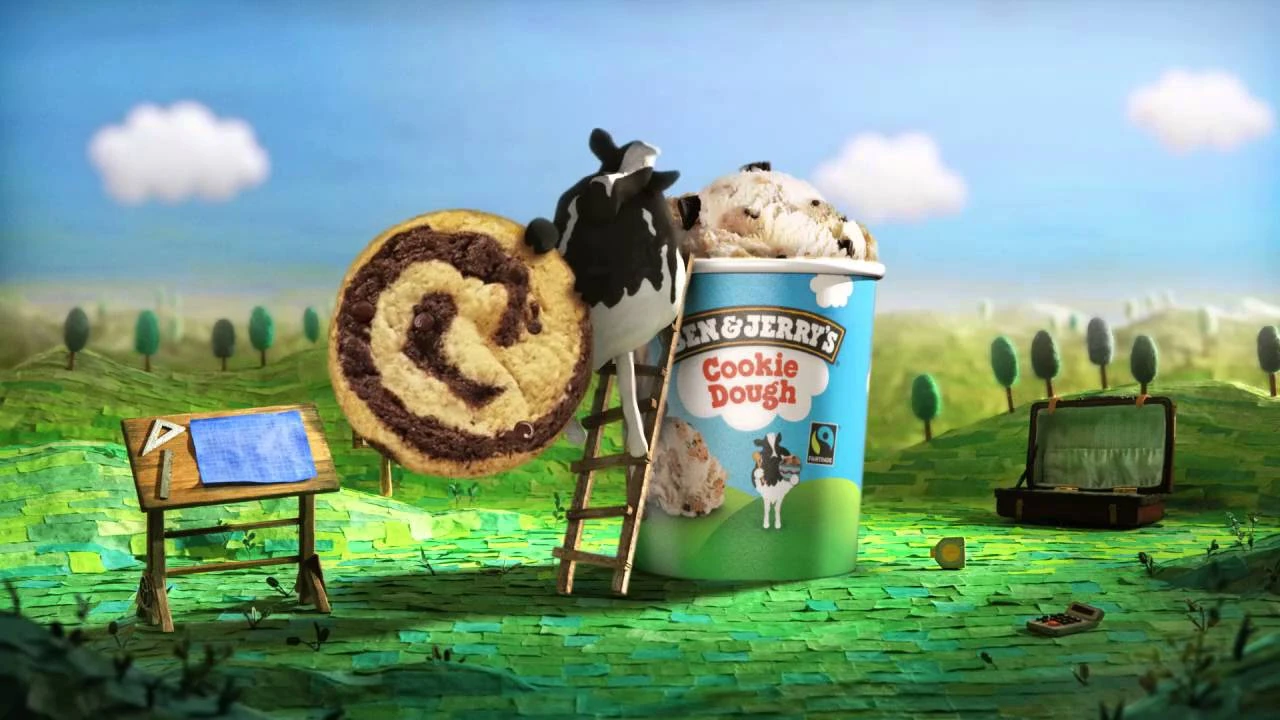
Personality traits: Fun, creative, wholesome, socially conscious.
Why: Ben & Jerry's playful brand makes dessert fun while the wholesome tone helps you feel good while eating it.
Elements: Playful fonts. Blue signifies trust and comfort, while green and brown connect the product to nature. Fun cartoons of nature reinforce the personality well.
Voice: The brand uses playful and wholesome phrases like “Choco-lotta cheesecake,” “Sunny honey home” and “We love making ice cream - but using our business to make the world a better place gives our work its meaning”.
Harley-Davidson
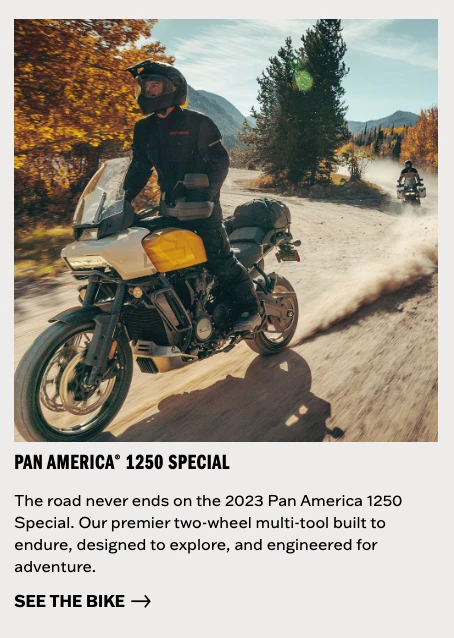
Personality traits: Rebellious, adventurous, rugged, authentic.
Why: Harley-Davidson appeals to the free spirit in individuals. It’s a rugged brand that symbolizes a sense of rebellion and a desire for adventure.
Elements: Strong bolded and capitalized fonts. Orange and brown color palette is rugged and adventurous. Images of open roads and motorbikes signify speed, excitement and adventure.
Voice: The brand’s adventurous personality is expressed through phrases like “Ride free,” “The road never ends on the 2023 Pan America 1250” and “Ready to ride?”.
Dove
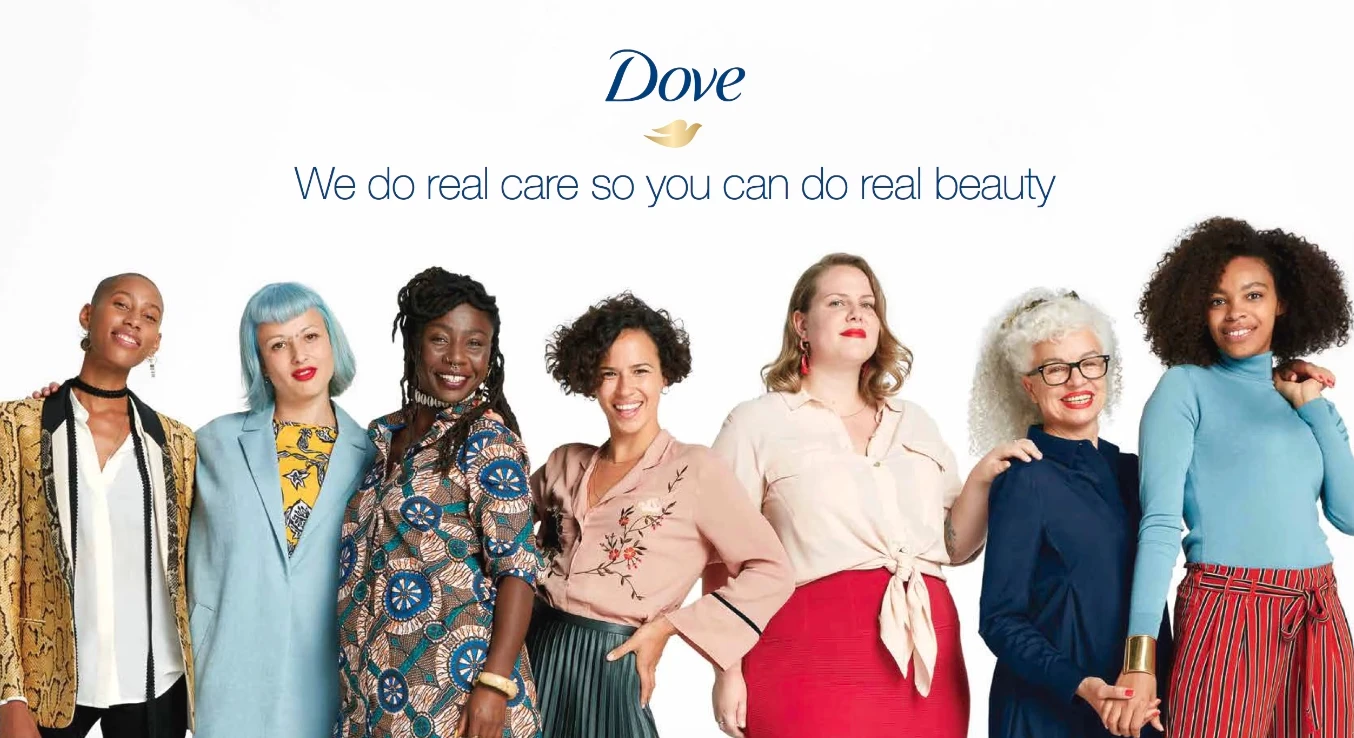
Personality traits: Sincere, empowering, inclusive, caring.
Why: Dove's brand personality focuses on promoting real beauty and self-confidence, resonating with consumers looking for authenticity and positivity.
Elements: Dark blue is trustworthy, while the gold logo is luxurious and confident. Photos with a diverse cast of models highlight inclusivity.
Voice: The sincere and empowering tone is reflected in phrases like “Real beauty,” “We see beauty all around us” and “Doesn’t your skin deserve better care?”.
Lego
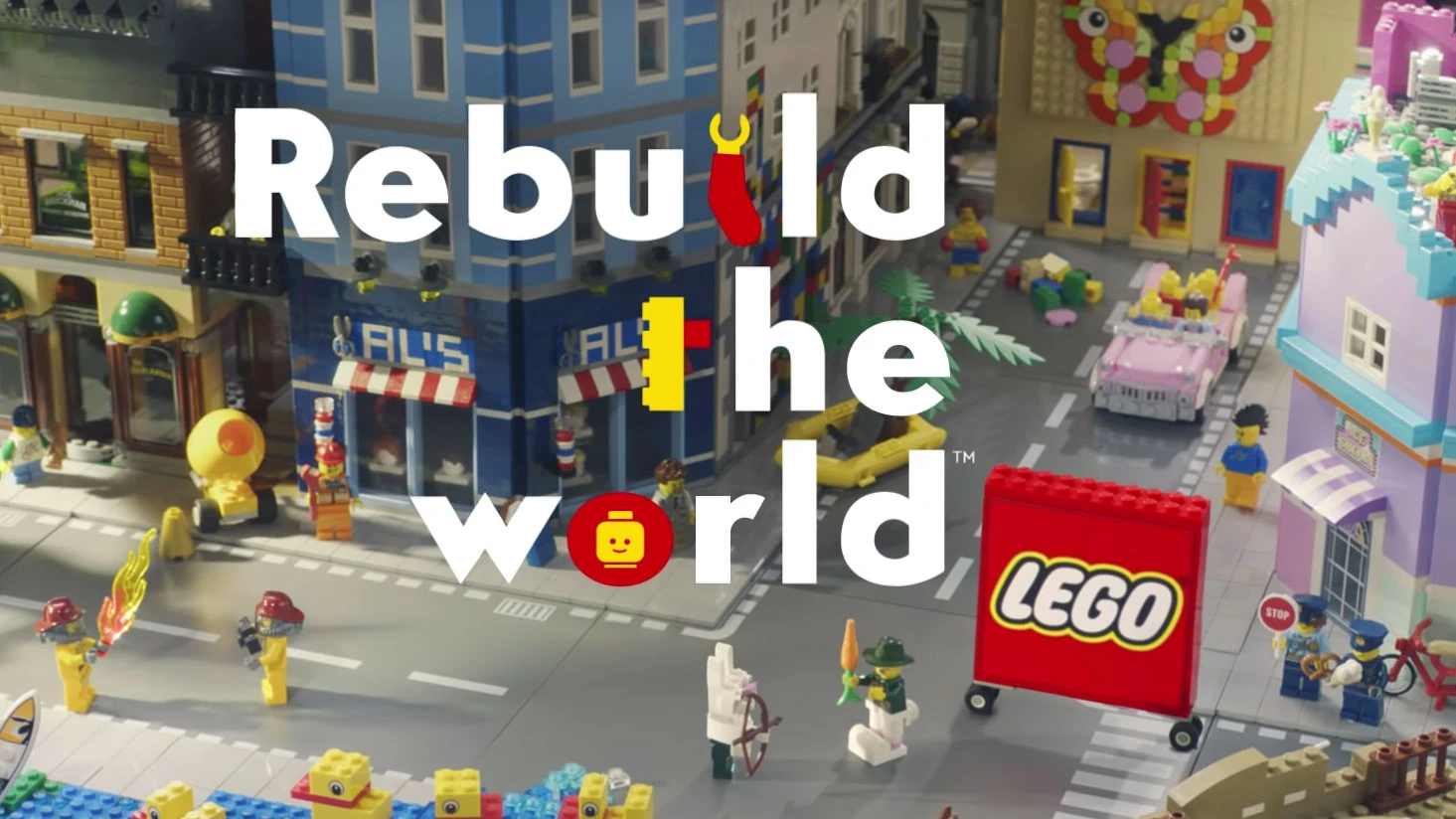
Personality traits: Creative, playful, imaginative, timeless.
Why: Lego's brand personality encourages creativity and imagination, appealing to both children and adults who enjoy building and storytelling.
Elements: Yellow signifies youth, optimism and happiness, while red represents excitement. Images highlight the creativity and adventure found in Lego products.
Voice: Lego’s personality is expressed through phrases like “Rebuild the world,” “What it is is beautiful,” and “Awaken their creativity”.
Now it’s your turn
By now you should have a good idea of how to create a brand personality and why it’s important to do so.
The key when creating yours is to be natural and not to force something that doesn’t fit with your current brand. Think about the ways you already engage your customers and then put in place strategies to optimize or reinforce this message.
Get this right and it won’t be long before you have a consistent brand personality that is more likely to appeal to your target audience.
